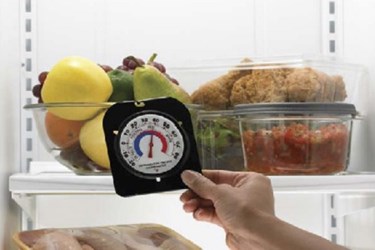Finding Safe Temperature Guidance For Food Handling, Processing, And Transport
By Laurel Maloy, contributing writer, Food Online

When perusing the thousands of pages in the FDA’s repertoire of regulation and guidance, finding critically-important, temperature-related information can be difficult. Here are a few sources to help your company’s operations stay out of hot water
My search for a chart by which to identify what temperatures were safe for processing, transporting, and holding food first turned up the Food Code. The Food Code was introduced in 1934 as Restaurant Sanitation Regulations. It was proposed and adopted by the U.S. Public Health Service, along with the Conference of State and Territorial Health Officers and the National Restaurant Code Authority. Neither of these last two entities exist today; however, the heart of the food code, and the important information it contains, does. Undergoing a number of name changes, continually being updated and revised, the first so-named edition of the Food Code was published in 1993. Celebrating 20 years, the newest edition of the Food Code was published by the U.S. Public Health Service, under the U.S. Department of Health and Human Services (USPHS) in 2013.
However, there is more than one source documenting proper temperatures for food operations. The Food Code, put out by USPHS can be accessed here, while the FDA Food Code, published by the FDA/CFSAN’s (Center for Food Safety and Applied Nutrition) Retail Food Protection Team can be accessed here. The relevant information is the same across both documents, though its presentation is somewhat different.
In the introduction to the USPHS’ 2013 Food Code, Margaret Hamburg, M.D. , Commissioner of the FDA, recognizes the efforts of all 50 states and 3 U.S. territories to pattern individual, retail food codes after the FDA’s model. She also states, “We strongly encourage the adoption and implementation of the 2013 Food Code at all levels of government.” Some states’ statutes differ slightly, a source of confusion within the industry. These minor issues will hopefully be resolved as FSMA progresses and the culture of foodborne illness prevention evolves. Indications are that one day there will be a uniformly accepted Global Food Code. Don’t get excited though — there is no link to a safe food processing temperature, or any other type of temperature chart, because there is none.
The last full edition of the Food Code was published in 2005, after increasing its updated intervals from two years to four years, with the support of the Conference for Food Protection (CFP). Unfortunately, inspection of the full edition has not produced a quick-reference chart for safe temperatures during transport, holding, storage, or preparation. Annex 4, Table 1 however, describes the methods by which specific bacterial contamination may be controlled. Annex 6, entitled Food Processing Criteria, also does not contain specific temperature variances, except in reference to Reduced Oxygen Packaging (ROP) and smoking and curing.
The most recent issue of the 2013 Food Code summarizes what changes have been made to the previous one, which recaps the changes to the code before that, and so on and so forth. One major change is simply the phasing out of the term “Potentially Hazardous Food” (PHF) and replacing it with Time/Temperature Control for Safety Food (TCS Food) throughout the entire code. This transitional language first appeared in the 2005 Food Code, with the original term being phased out completely in the 2013 version.
As has been apparent with the FDA’s transparency and public communicativeness, the agency appears to be striving for more positive language; thereby a more progressive response. That being said, there are obviously areas which need a bit of improvement, as is the need for simplification on some topics. Searching the term “FSMA safe temperatures” reveals that temperature guidance is provided under specific proposed rules, such as that for Sanitary Transportation of Human and Animal Food. A search of “FSIS safe temperatures” yields this chart, though its message is clearly for the consumer, not the processor. What did the search term “HACCP safe temperatures” bring? This search sent me here, one of the more comprehensive sources for information on temperature monitoring, food storage, and preparation. After researching the Food Code back to 1997, I found Section 3-5 covers Limitation of Growth of Organisms of Public Health Concern. Processors may also find Section 3-4 helpful; it covers Destruction of Organisms of Public Health Concern.
Other helpful resources include:
- Food Safety: Theory and Practice, by Paul L. Knechtges
- FDA Safe Practices for Food Processes: Evaluation and Definition of Potentially Hazardous Foods - Chapter 8. Framework Developed to Determine Whether Foods Need Time/Temperature Control for Safety
- Critical Control Point Decision Tree Table
- Controlling Time and Temperature
- Food Safety Plan Reference Chart
- Critical Temperature Chart
As FSMA’s finalization and implementation is realized and the FDA finds itself looking for a meaningful and time-worthy project, I’d like to suggest — a quick reference safe temperature guide for the food processing industry.
